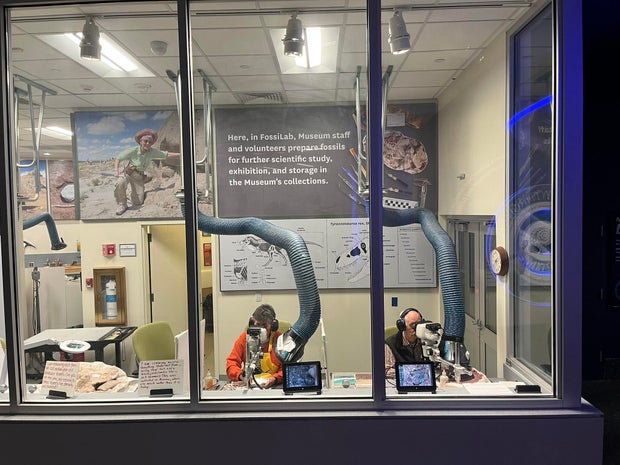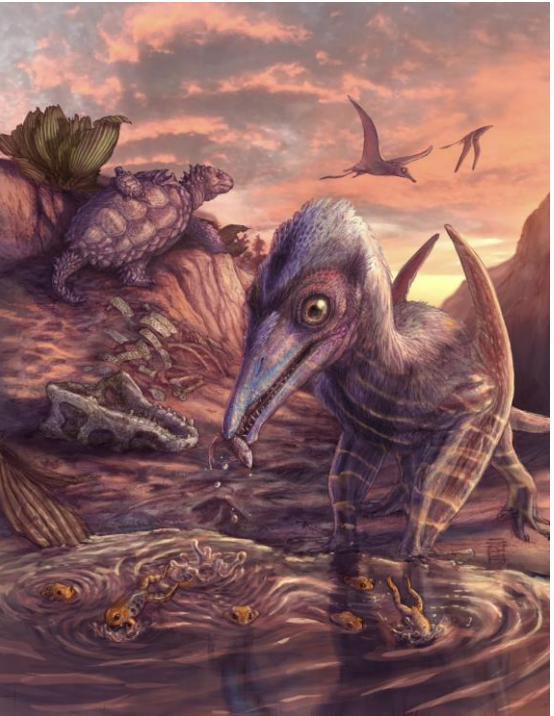For paleontologist Ben Kligman, the question was: Is this fragile jawbone a pterosaur or not?
Other researchers also had questions about the fossil, unearthed along with thousands of others during a decades-long archaeological dig at a remote bone bed in the Petrified Forest National Park in Arizona. Some thought the bone could’ve been a mammal, Kligman told CBS News.
Now, their new research offers insight into North America’s oldest known flying reptile that Kligman and other paleontologists say was the size of a “small seagull.”
The Smithsonian-led paper, published Monday in the Proceedings of the National Academy of Sciences journal, details the new pterosaur fossil discovery along with several others, providing insight into the late Triassic period.
Ben Kligman
Kligman remembers looking at the jawbone under a microscope at the Smithsonian — where he is a Peter Buck postdoctoral fellow and where the fossil had been sent — and running through his “Rolodex” of Triassic jaw anatomy, thinking about what species could have a similar jaw. He wanted to solve the mystery of where the delicate jawbone belonged.
Through the process of elimination, and thinking of the features pterosaurs have that no other animal has, Kligman said he and other researchers were able to conclude that, “Oh yeah, this is definitely a pterosaur — therefore, this is a very important discovery.”
The team named the pterosaur the Eotephradactylus mcintireae, which means “ash-winged dawn goddess.” The species name references its discoverer, Suzanne McIntire, who volunteered in the Smithsonian’s FossiLab for 18 years.
McIntire discovered the pterosaur fossil, which had been brought to the museum from the Petrified Forest National Park along with 1,200 other individual fossils, including bones, teeth, fish scales and coprolites, or fossilized excrement.
Volunteers painstakingly clean each fossil, flag ones of interest and perform other fossil conservation tasks. McIntire unearthed the jawbone and noticed the teeth were still in the bone, making it easier to identify.
Ben Kligman
The winged reptile — a close cousin of dinosaurs and the first animals after insects to evolve powered flight — would’ve been small enough to comfortably perch on a person’s shoulder.
“It could’ve sat on your shoulder, like a small seagull,” Kligman said of the species.
Researchers were able to date the fossil back to 209.2 million years ago — an unusually precise date, Kligman said, because of the level of volcanic ash where the fossil was found. The finding helps fill in a gap in the fossil record that predates the end-Triassic extinction, he said. Very few pterosaur fossils exist, Kligman said. After their extinction, their fragile bones preserved poorly, so pterosaur fossils are frequently incomplete. They also did not live close to places where fossils tend to form.
Illustration by Brian Engh
“It helps us understand what a pterosaur was and how they became what they would become,” Kligman said.
Along with the pterosaur, the study also detailed other findings, including one of the world’s oldest turtle fossils, giant amphibians and armored crocodile relatives, which lived alongside evolutionary upstarts like frogs, turtles and pterosaurs.


